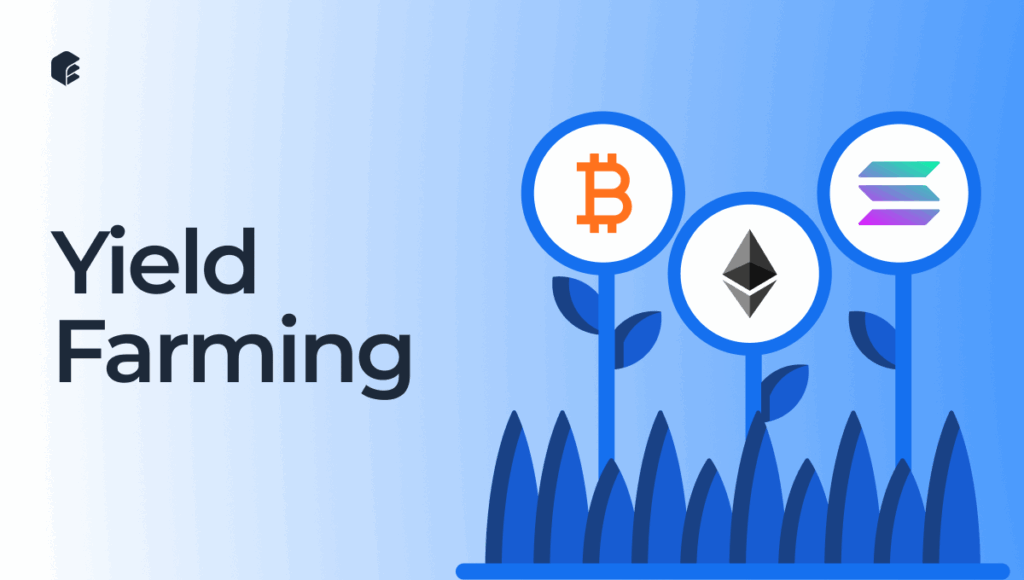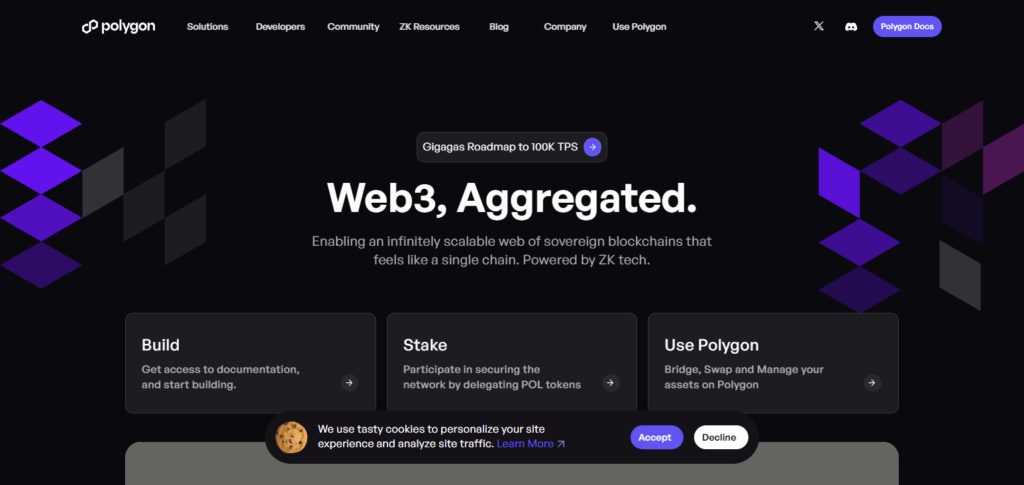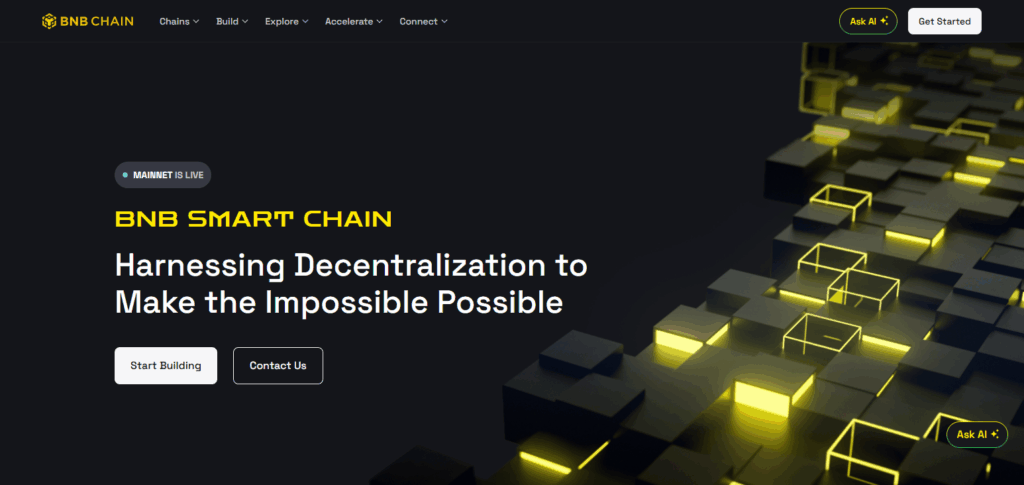In this article, I will cover Yield Farming on Polygon and BSC and outline their principal differences, advantages, and disadvantages.
While both offer low fees and fast transaction speeds, they differ in security, the level of decentralization, and farming opportunities.
Whether you are new to DeFi or a seasoned user, these distinctions can aid in selecting the best network for your yield farming strategy.
What is Yield Farming?
Yield farming is a strategy ecosystem from decentralized finance (DeFi) that enables users to lend or stake their cryptocurrency within liquidity pools to derive interest, fees, or other rewards.

It helps investors earn passive income through offering liquidity to decentralized exchanges or lending platforms.
The returns can differ based on the protocol used, the underlying asset, and overall market scenario. Yield farming is alluring due to the advantage it offers; however, it has risks associated with it like impermanent loss and smart contract vulnerabilities.
What is Polygon ?
Polygon is a Layer 2 scaling solution aimed at boosting the Ethereum blockchain’s throughput and minimizing its transaction costs. Matic Network rebranded into Polygon as they use sidechains to process transactions faster while gaining security and decentralization from Ethereum.

It caters to several DeFi applications, NFT marketplaces, and Web3 technology providing a convenient and scalable interface for developers. Yield farming and decentralized applications have driven Polygon to prominence, benefitting from low gas fees, swift transactions and an Ethereum based toolkit.
What is BSC?
Binance Smart Chain (BSC) is an auxiliary blockchain created by Binance to enable smart contracts and decentralized applications (dApps) on its ecosystem. BSC was launched in 2020 and operates in parallel with Binance Chain, boasting compatibility with EVM which allows developers to port Ethereum-based projects with ease.

BSC has gained popularity for its low transaction fees, fast block times, and an active DeFi ecosystem. However, it is often criticized for being more centralized due to the small number of validators controlled by Binance. Regardless, it continues to be popular in the DeFi ecosystem for yield farming and crypto trading.
Yield Farming on Polygon vs BSC
Here is a comparison table for Yield Farming on Polygon vs BSC:
| Feature | Polygon (MATIC) | BSC (Binance Smart Chain) |
|---|---|---|
| Transaction Fees | Very low (fractions of a cent) | Low (typically a few cents) |
| Transaction Speed | ~2 seconds per block | ~3 seconds per block |
| Decentralization | More decentralized (many validators) | More centralized (limited validator set by Binance) |
| Security | Backed by Ethereum’s Layer 2 architecture | Security maintained by Binance and validators |
| Popular Platforms | Aave, QuickSwap, Beefy Finance | PancakeSwap, Venus, AutoFarm |
| Liquidity | Growing, strong for Ethereum assets | High liquidity, especially BNB and BEP-20 tokens |
| Wallet Compatibility | MetaMask, Trust Wallet, Coinbase Wallet | MetaMask, Trust Wallet, Binance Wallet |
| User Experience | Smooth, but some tools are still maturing | Mature tools, beginner-friendly interfaces |
| EVM Compatibility | Fully compatible with Ethereum tools | Fully compatible with Ethereum tools |
| APY Opportunities | Competitive, varies across protocols | Often higher, but riskier platforms |
Which One Is Better for You?
Your goals, the risks you are willing to accept, and your level of expertise will inform your decision between yield farming on Polygon or BSC.
- For BSC, less experienced farmers stand a better chance of success using PancakeSwap and gaining access to liquid markets for popular tokens.
- Polygon users worried about security might appreciate the chain’s lower exposure to central control due to Ethereum’s extensive decentralization.
- Users who place the most value on transaction fees and speed will find only a slight gas improvement from Polygon compared to the other chain.
- Though riskier, more aggressive farming platforms available on BSC generally offer higher APYs.
How Yield Farming works on Polygon
Connect Your Wallet Compatible With Polygon: Utilize MetaMask or Trust Wallet and set them up for the Polygon network.
Bridge Your Assets To Polygon: Use the official Polygon Bridge to transfer your cryptocurrency assets (USDC, ETH, MATIC, etc.) from Ethereum or other networks.
Pick A DeFi Service: Proceed to QuickSwap, Aave, or Beefy Finance and other Polygon-based platforms to begin farming.
Provide Liquidity: Invest in pairs of tokens such as USDC and ETH through liquidity pools to share in trading fees and yield tradeable rewards.
LP Token Staking: After liquidity provision, stake your LP (liquidity provider) tokens in farming pools to earn more on top of what is earned after liquidity provision.
Yield Gaining: Earning chances include base tokens (QUICK, MATIC) or increased APYs due to vault strategies.
Flexible Withdrawals: Withdrawal of funds with rewards is acceptable at any time. However, platforms may impose lock periods and withdrawal fees.
Pros & Cons Yield Farming on Polygon
Pros:
Gas Fees: Cost-effective farming as transactions cost less than a cent.
Transaction Speed: Usually within 2 seconds for confirmations.
Ethereum Compatibility: Works with Ethereum wallets and tools like MetaMask.
Secure Network: Uses Ethereum’s Layer 2 security model.
Expanding DeFi Ecosystem: Includes Aave, QuickSwap, and Beefy Finance.
Cons:
Requires Bridging: Slower Ethereum cross-chain transfers come with moving assets.
Lower Liquidity: Less liquidity in some pools as compared to BSC or Ethereum.
Ecosystem Still Maturing: Limited available tools compared to more established networks.
Network Congestion: Slower during peak usage times.
Smart Contract Risks: Like any DeFi, prone to bugs and exploits.
Pros and Cons of Farming on BSC
Pros:
Low Transaction Fees: Access on the Binance Smart Chain comes with significantly cheaper gas fees, normally just a couple of dollars.
Fast Block Times: Transactions are confirmed very quickly (approximately every 3 seconds).
High Liquidity: A lot of active participants in popular farming pools contribute to their considerable liquidity.
Wide Platform Support: Major DeFi applications like PancakeSwap, Venus and AutoFarm can be easily accessed.
Beginner Friendly Interface: Intuitive simple dApps are great for those just starting out.
EVM-Compatible: Tools and wallets based on Ethereum can be used without any problem.
Cons:
Centralization Concerns: The majority problem of BSC is the limited amount of validators, most of which are controlled by Binance.
Higher Risk Projects: There are lots of farms with high APY’s that are unaudited or simply riskier.
Security Issues: The chain has been subject to a number of hacks and rug pulls.
Regulatory Concerns: Increased scrutiny globally can affect the ecosystem’s stability.
Less Transparent Governance: Compared to other chains with more decentralization, the community has very little influence.
Conclusion
Yield farming on Polygon and BSC has its enticing opportunities, including their distinct benefits. For users wanting stability and growth over time, Polygon is ideal due to its low fees, fast transaction speeds, and Ethereum-level security.
BSC, on the other hand, caters to higher yield farming opportunities with faster adoption and ease for newcomers—though its centralization and security history makes it riskier. Depending on one’s investment objectives, platform preferences, and risk appetite determines the best choice.
FAQ
Which one is better for beginners?
BSC is often easier for beginners due to its simple platforms like PancakeSwap and higher liquidity.
Do I need to bridge tokens to use Polygon or BSC?
Yes, if your tokens are on Ethereum or another network, you’ll need to use a bridge to move them to Polygon or BSC.
Can I use MetaMask on both Polygon and BSC?
Yes, MetaMask supports both Polygon and BSC. You can switch networks by adding them manually.









